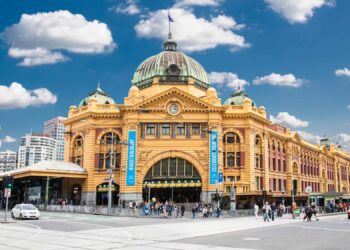SPAA's Graeme Colley highlights the changes to death benefit pension rules.
The treatment of non-reversionary pensions on the death of a pensioner was recently changed and backdated to 1 July 2012.
These amendments allow the tax exemption to continue for income and capital gains on investments supporting the pension until a lump sum is paid or a new pension commences.
The amendments may also have an impact on the calculation of the taxable and tax free components of the benefit, in addition to the payment of the minimum pension in the year of the pensioner's death.
The amendments do not apply to reversionary pensions as they commence immediately on the death of the original or subsequent pensioner, and the income on the pension assets of the reversion will form part of the fund's exempt current pension income.
The history of the amendments goes back as far as 20 August 2004 with the publication of ATOID 2004/688 and subsequent publication of draft taxation ruling TR 2011/D3 which has now been finalised as TR 2013/5.
The ruling provides the Commissioner's view on the commencement and cessation of account-based pensions, as well as transition to retirement pensions. There are some differences between the draft and the final.
This is due to the amendments which became law on 4 June 2013, backdated to 1 July 2012, as well as the publication of how the exercise of the general powers of administration by the Commissioner operates in relation to the failure of the fund to pay the minimum pension.
In addition, the Commissioner has also issued SMSF Determination 2013/2 concerning whether payments on partial or full commutation count against the minimum pension payable.
Exempt Current Pension Income
An income tax exemption is provided under sections 295-385 and 295-390 of the Income Tax Assessment Act 1997 (ITAA 97) for the income of a complying superannuation fund that relates to assets supporting a superannuation income stream benefit.
‘Superannuation income stream benefit' is defined in reg 995-1.01 of the Income Tax Assessment Regulations 1997 (ITAR 97).
This definition is expanded by the amendments made by the Income Tax Assessment Amendment (Superannuation Measures No.1) Regulation 2013 that became law on 4 June 2013 and were backdated to 1 July 2012.
The amendments are designed to benefit beneficiaries of a deceased member who was in receipt of a non-reversionary income stream by allowing superannuation fund trustees to dispose of pension assets on a tax-free basis to provide for the payment of death benefits.
The expanded term continues to treat assets of a complying superannuation fund as exempt current pension assets which supported a non-reversionary pension at the time of the pensioner's death, until a lump sum and/or pension commences to be paid.
Amounts, other than investment earnings, which are added to the pension account after the pensioner's death are not included in exempt current pension income.
Investment earnings do not include proceeds from an insurance policy paid after the pensioner's death or an amount arising from self-insurance. Neither do they include amounts credited to the member's account from anti-detriment payments.
The reason for this is to ensure the level of the exemption after the pensioner's death is no greater than it was prior to that time, with the exception of investment earnings.
Here are some case studies to illustrate how the amended legislation operates for amounts that are included in the exempt current pension income:
Case Study 1
Alex was in receipt of a non-reversionary superannuation income stream at the time of his death on 1 June 2013.
Under the rules of the superannuation fund Alex's surviving spouse is entitled to a lump sum of $400,000 equal to his pension account balance at the time of payment on 31 December 2013.
Nothing is added to his account balance except for investment earnings. For purposes of exempt current pension income the amount of $400,000 is taken as the amount supporting the income stream benefit payable from the time of Alex's death on 1 June 2013 until 31 December 2013.
Case Study 2
Barry was in receipt of a non-reversionary superannuation income stream at the time of his death on 18 June 2013. Barry's account balance at the time of his death was $300,000.
There were two beneficiaries of his death benefit, his son Bruce and his daughter Barbara. Each was entitled to 50 per cent of Barry's account balance plus earnings under the rules of the fund at the time of death.
Bruce was paid his benefit on 31 August 2013 when the balance in the fund had accumulated to $320,000. He was paid $160,000 as a lump sum.
Due to Barbara not being able to be located she was not paid until 1 November 2013 when the remaining balance had accumulated to $180,000.
For purposes of exempt current pension assets, $320,000 will be taken as an amount supporting a superannuation income stream benefit payable from 18 June until 31 August 2013, and $180,000 will be taken as an amount supporting a superannuation income stream benefit from 18 June until 1 November 2013.
Taxable and Tax Free Amounts of Non-reversionary Pensions on Death
Another change to the rules for non-reversionary pensions which is included in the amendments to the ITAR 97 is a change to the calculation of the taxable and tax free components where amounts are added to the account balance after the death of the pensioner.
At the time a superannuation pension commences a calculation is made to work out the taxable and tax-free components of the pension. This is called the proportioning rule, and the proportions calculated remain in place until the pension ‘ceases'.
Under the amendment the taxable and tax-free proportions that applied to non-reversionary death benefit pensions continue to apply to any lump sum or new pension that commences from the death benefit, but not to any anti-detriment payment or proceeds of insurance added to the pension superannuation interest.
These additional components will have their own taxable and tax-free components
The amended rules allow any income earned on investments that support the non-reversionary pension assets after the pensioner's death to be included in the pension account balance that is subject to the proportioning calculation.
However, any other amounts credited to the account, for example, from the proceeds of an insurance policy plus any anti-detriment payments are not included in the same calculation.
Here are some case studies to illustrate the point on the calculation of taxable and tax-free amounts after the death of a non-reversionary pensioner.
Case Study 3
Nancy was receiving a superannuation income stream which was non-reversionary.
The balance of the pension account at the time it commenced on 1 July 2008 was $300,000 and consisted of 1/3rd tax-free component and 2/3rd tax-free component.
After Nancy's death on 1 January 2013 no further amounts were added to the balance of her pension account except for earnings on the pension assets. The pension account is now valued at $150,000.
Under the rules of the fund the entire value of Nancy's pension account ($150,000) are to be paid to her adult child, Flora on 1 October 2013. The lump sum received by Flora will consist of $100,000 taxable component and $50,000 tax-free component.
Case Study 4
George was receiving a superannuation income stream which was non-reversionary at the time of his death on 1 May 2013. The tax-free portion of his superannuation income stream was 45 per cent and the taxable proportion was 55 per cent.
At the time of George's death the balance of his non-reversionary income stream account was $500,000. In addition, the proceeds of an insurance policy of $400,000 were added to the account.
Under the rules of the fund George's adult son, Harry, is entitled to a lump sum.
The lump sum of $920,000 will consist of a tax-free component of $225,000 (45 per cent of $500,000), the taxable component of $275,000 (55 per cent of $500,000) and the proceeds of the insurance component which will have different tax free and taxable components.
Paying the minimum pension in the year of death
Under the provisions of SIS Reg 1.06(9A) and Schedule 7 a minimum pension is required to be paid each year in which the superannuation income stream exists. Where the income stream is commuted during a financial year the minimum amount is required to be paid. The minimum is pro-rated on a time basis.
However, there are exceptions to this general rule to pay a minimum amount.
One exception is that on the death of a pensioner there is no requirement to pay the minimum amount of the account-based income stream if it is commuted in a year of income.
This means that where no income stream has been paid prior to death there is no requirement to pay any pension in that year if there is no reversion.
With the changes made to the rules for non-reversionary account-based income streams from 1 July 2012, it may be that the superannuation income stream benefit is treated as continuing until a benefit is finally paid out as a lump sum or another income stream commences.
Where the pensioner dies during a year of income and a lump sum or subsequent income stream commences in the next financial year, it would appear that in the year of death a minimum income stream is required to be paid.
Of course, this may depend on when the pension is treated as being commuted for purposes of SIS regulation 1.07D in the case of an account-based pension.
Further information on what the Commissioner considers is a commutation of a pension is published in TR 2013/5. The following case study illustrates the most likely operation of the requirement to pay the minimum pension in the year of death.
Case Study 5
Paolo, who is 65, had a balance in his self-managed superannuation fund as at 1 July 2012 of $500,000.
For the 2012/13 financial year the minimum non-reversionary account-based income stream to be paid was 3.75 per cent of the opening balance at that time, which is $18,750. Paolo decides to receive the minimum pension and have the pension paid each six months on 31 December and 30 June.
Paolo dies on 15 June 2013 and has received $9375 as at the time of his death which is half of the minimum required to be paid for the financial year.
Paolo has two adult children who live overseas and have been difficult to find. They are finally located in late August and lump sums are paid to them on 1 October 2013.
During the 2012/13 financial year, despite the fact that Paolo has died, the assets that were supporting his non-reversionary account-based pension up until his death continue to be treated as supporting a superannuation income stream benefit until the time the benefits are paid to his two adult children.
This means that the superannuation income stream has been payable for the full year and will require a payment of $9,375 on 30 June 2013 for the income stream to meet the minimum payment requirements.
In the following year no payment will be required as it is assumed the superannuation income stream that has been commuted meets the requirements of Reg 1.07D.
An alternative view could be that the ‘commutation' has taken place at the time of Paolo's death on 15 June 2013 and therefore there is no requirement to meet the minimum account-based pension requirements in the 2012/13 or 2013/14 income years.
The amendments to the ITAR 97, the publication of TR 2013/5 and SMSFR 2103/5 and the use of the Commissioner's administrative powers in relation to the payment of pensions provide a useful guide in the operation of the new legislation.
However, there continues to be other matters which require clarification to clear up some of the issues that have now come to light as a result of these changes.
Graeme Colley is the director for technical and professional standards at the SMSF Professionals' Association of Australia (SPAA).
Originally published on SMSF Essentials.





